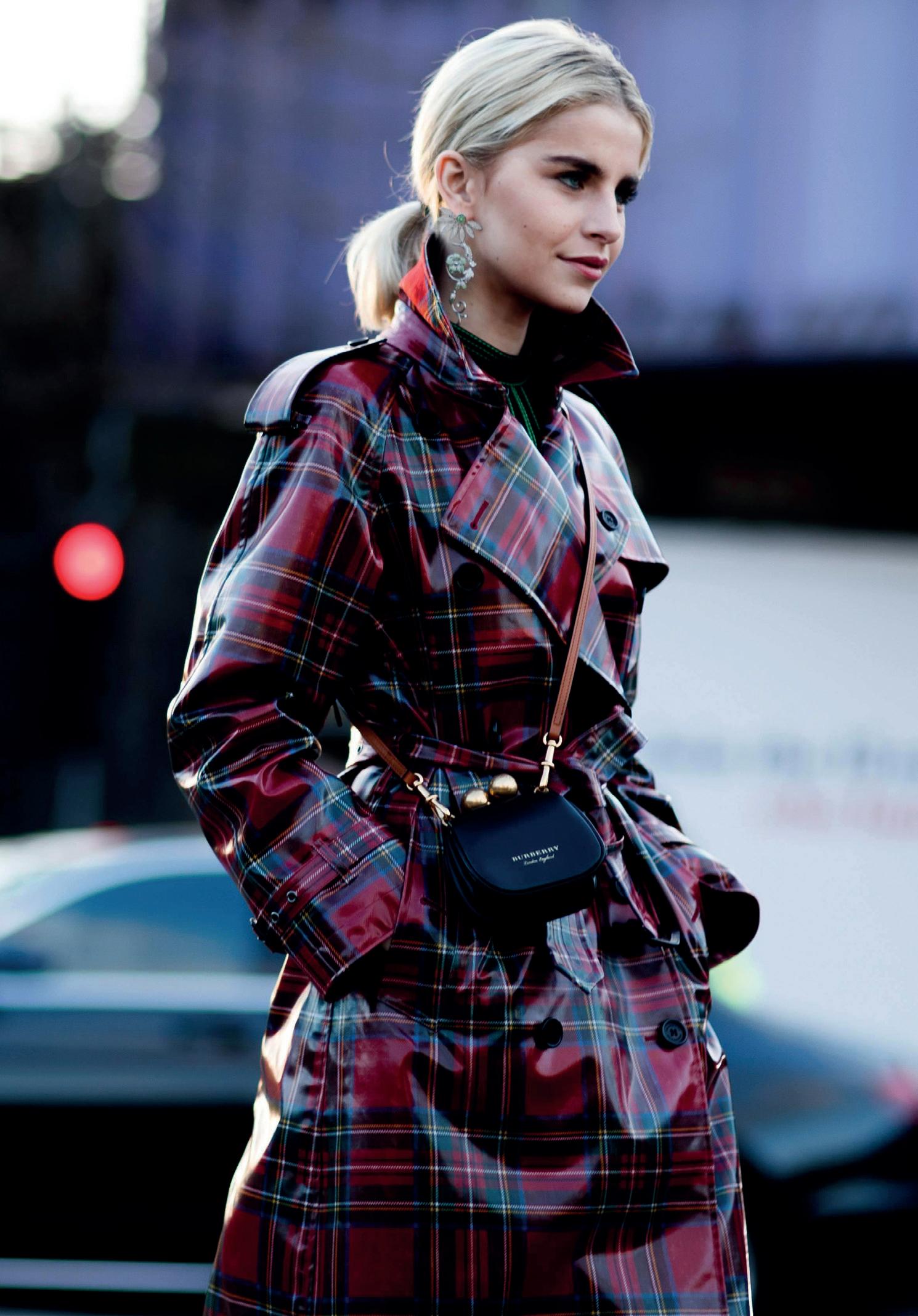BURBERRY TRENCH

THE
In 1879, gentlemen’s outfitter
Thomas Burberry first invented gabardine. Until then, waterproof macs were made of rubberized cotton – a heavy fabric that would cause the wearer to sweat profusely. Unlike its vulcanized rubber counterpart, gabardine’s fibres were individually waterproofed before weaving, making the fabric lightweight and comfortable. The revolutionary gabardine was such a hit among adventurers that Burberry was entrusted with outfitting several high-profile expeditions. Norwegian explorer, zoologist and Nobel Peace Prize recipient Dr Fritjof Nansen was the first to take Burberry to the poles in 1893, and he wasn’t the last – Sir Ernest Shackleton wrapped himself, his team, their tents (and even the engine of their car) in gabardine on three separate Antarctic treks.
Left:
Opposite: Burberry used their new gabardine fabric to create polar outwear (advertised left), including the helmet worn by Sir Ernest Shackleton (right).
It was a publicist’s dream and one that likely contributed to the British Army asking Burberry to create a coat suitable for the battlefield. Thomas Burberry took the existing Tielocken coat (Burberry’s one-button, single-strap design that was popular among officers in the Boer War) and updated it with D-rings to carry flasks, maps and grenades, flaps for extra chest protection and epaulettes upon which an officer could display his rank. And thus, the trench coat was born. Notably, it was only those of officer rank who were permitted to wear such an item, establishing it as a status symbol. Affluent civilian men and women followed suit, wearing Burberry trenches as a show of national pride – and social standing – while officers continued to wear their coats after the war (and later, into World War II). The coat became so popular that by 1934


Burberry was offering same-day delivery in London. As a result, five heritage silhouettes became the classics of all time – the Waterloo, Kensington, Chelsea, Camden and Pimlico.

THE LAMINATED EASTHEATH
Burberry had played with lamination and transparency before, but in 2018, the launch of the laminated Eastheath collection showed off lightweight, waterproof protection in everything from neon check to patent-effect lace to transparent plastic. The style was cut with a relaxed, longline silhouette and both lined and unlined. A classic silhouette reworked with a polished laminated finish, the Eastheath trench was the perfect fusion of heritage style with contemporary touches. Rendered in luxurious cotton blend, its defining features –sophisticated notched lapels, double-breast buttoned fastening and waist tie – faultlessly congregated to create a feminine piece.




CINEMATIC STYLE
The trench had become synonymous with adventure and utility, but it was the golden age of motion pictures that made it glamorous. With a firm establishment in the military, the trench coat was effortlessly cool and carried the attitude and persona of the powerful, fearless, brave and mysterious. Detectives, gangsters, spies, femme fatales and leading men could be seen wearing the iconic garment on screen. In the 1942 film Casablanca, Humphrey Bogart utters his famous line, “Here’s looking at you, kid,” while wearing a Burberry coat – a coat that went on to sell for over $10,000 at auction in 2005.
One of the trench coat’s most iconic silver-screen moments is the kissing-in-the-rain scene in Breakfast at Tiffany’s. In the 1961 film’s final moments, Audrey Hepburn’s Holly Golightly (and her cat, Cat) is wrapped in a mac as she reunites with Fred. It is one of the film’s most unforgettable costumes – second only, perhaps, to that Givenchy little black dress. Although the designer of the aforementioned coat remains a mystery, it’s likely this cinematic moment fuelled sales of the Burberry original. Because, sure enough, by 1965, one in five coats exported from Britain was a Burberry product. Decade upon decade, the allure of Burberry’s trench never waned. It appears in 1964’s The Umbrellas of Cherbourg, on a bowhaired Catherine Deneuve; in 1979’s Kramer vs Kramer, as worn by the elegant Joanna, played by Meryl Streep; and in 1987’s Wall Street, as the coat of choice for Michael Douglas’ Gordon Gekko.

Above: Audrey Hepburn and George Peppard, as Holly Golightly and Paul Varjak in Breakfast at Tiffany’s

Opposite: A perfectly polished Meryl Streep, as Johanna, wears a buttoned-up Burberry in Kramer vs Kramer. Dustin Hoffman’s Ted also wore a Burberry in the movie, but, as indicative of their different characters, his was worn rumbled and relaxed.

